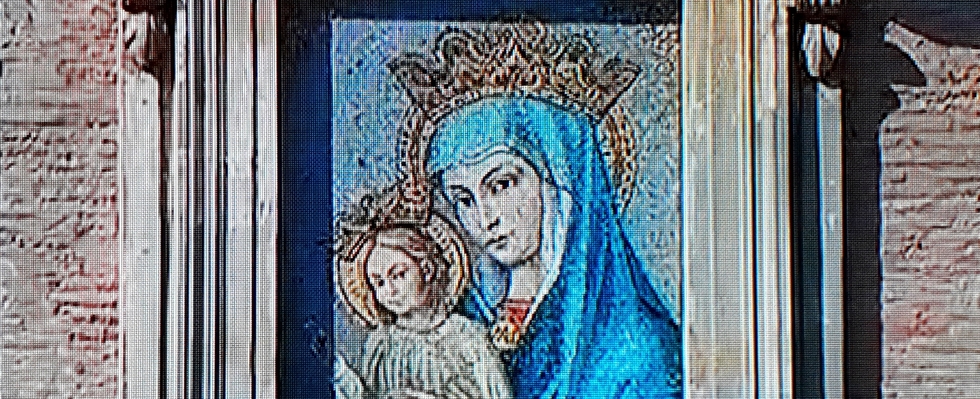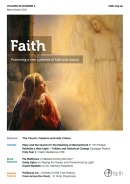Book Review: Praying the Rosary(Gretchen R. Crowe) & Transformed By Light (Joanna Bogle)
Review by Emily Dytor
For many Catholics the Rosary is a daily “must” in their prayer life. Others have a Rosary in their house somewhere, but can’t remember the last time they picked it up. Whether you are part of the first camp, the second, or somewhere in between, Praying the Rosary with St. John Paul II (Crowe) and Transformed by Light: the Story of London’s Rosary Garden (Bogle) can help to deepen and enrich your prayer life.
Living out the Rosary
Crowe opens her book telling us that John Paul II began his papacy with these words: “The Rosary is my favourite prayer, a marvellous prayer, marvellous in its simplicity and its depth.” The Rosary was a pillar of St. John Paul’s spirituality, and he inspired many to pray it daily, promoting it as a means to be drawn into the contemplative heart of the Holy Mother and thus to be drawn into the heart of her Son. Crowe provides a brief biography of John Paul’s life (written by Russell Shaw) before beginning reflections on each mystery of the Rosary, starting with the Joyful Mysteries. Each mystery is accompanied by a short quote from Scripture, a photo of Pope John Paul II, the spiritual fruit of the mystery, a recommended Scripture passage to look up and read, and a reflection by the Holy Father.
At the back of the book, Crowe provides the basic prayers of the Rosary, making this a good tool for those new to the Rosary, as well as for those more familiar with it. The Scripture passages, reflections, and pictures for each mystery draw one into deeper prayer and meditation upon the Christian life. Each picture is connected to a mystery: for example, the Nativity shows the Pope kissing a baby’s head, and the Scourging at the Pillar shows him convalescing in a hospital bed after his assassination attempt. The images give tangible examples of a Saint living out each mystery of the Rosary. All in all I find Praying the Rosary with St. John Paul II a beautiful and wellorganized prayer tool which I will come back to again and again.
Our Lady of Cana
Bogle introduces her book with a succinct history of the Dominican Blackfriars’ establishment in London, providing intriguing historical facts about Catholicism in England. Today the Dominican church, Our Lady of the Rosary and St Dominic, dating from 1883, is one of the largest in London. It contains three chapels dedicated to the traditional Joyful, Sorrowful, and Glorious mysteries of the Rosary but is obviously missing a chapel for the Luminous mysteries which weren’t created until 2002. This is where the story of London’s Rosary garden comes in: the garden, dedicated to the Luminous mysteries, was created to fill this void. Bogle describes all that went into planning the garden. One learns about the many interesting and beautiful symbols used to represent different aspects of our Catholic faith, starting with the reasons as to why a garden is a fitting setting in which to pray the Rosary. The statue at the very heart of the garden is Our Lady of Cana and the association with Cana, Bogle explains, is important not only because it is the second of the Luminous mysteries, but also because of the intimate link between Cana and Mary’s intercessional role in initiating the redemptive mission of Christ, which is at the very core of the meaning of the Rosary.
desecrations of Henry VIII and which has been somewhat renewed by the Catholic revival of the 19th century. I also really enjoyed, and was surprised to read about all the plants that have [forgotten] Marian names such as Fruitful Virgin (wild strawberry), Our Lady’s fingers (Honeysuckle) and Our Lady’s garlic (chives) amongst several others. I should also mention that throughout the book there are lovely watercolour pictures.
Horticultural contemplation
Next you get a brief meeting with the American born Catholic convert sculptor of the Cana statue, Cody Swanson, and discover how his deep faith and love of beauty drew him to this work. We then learn what went into planning the flowers and layout of the garden and gain an appreciation for the contemplative process of religious horticultural creation. Bogle includes a brief history of the Rosary, in particular the Luminous mysteries, and a biography of St. John Paul II.
One of the most interesting chapters to me is about the history of devotion to Mary in England, which was very prevalent before the
More than a garden
The antepenultimate chapter gives practical advice from Popes on how to pray the Rosary and inspiring reasons why the Rosary is such a valuable prayer. In the final two chapters (like Crowe), Bogle provides all the mysteries and basic prayers of the Rosary as well as reflections for each mystery, this time from writings of St John Henry Newman, again making it a beneficial prayer tool for both seasoned and novice Rosary prayers alike.
In summary Transformed by Light: The Story of London’s Rosary Garden is a relatively quick and certainly enjoyable read which offers much more than just a story about a physical Rosary garden, but metaphor and analogy for prayerful meditation, fascinating history, and beauty to inspire.
Emily Dytor is a full time mother of three young children.
Notes:






